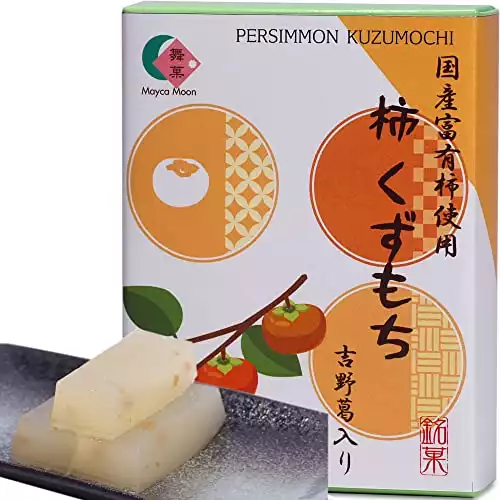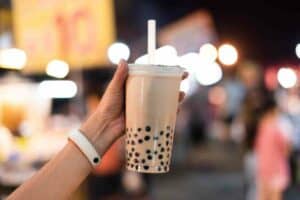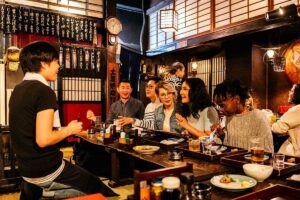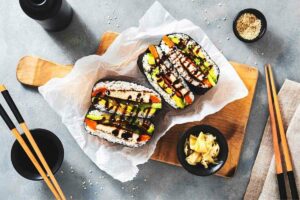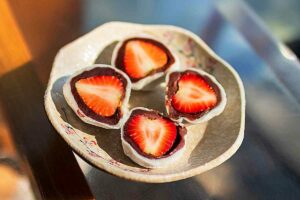Japan is one of the world’s best destinations for sweet treats, with ice cream, puddings, pancakes, cream puffs, and everything in between.
But the traditional sweets of Japan provide an entirely different culinary experience.
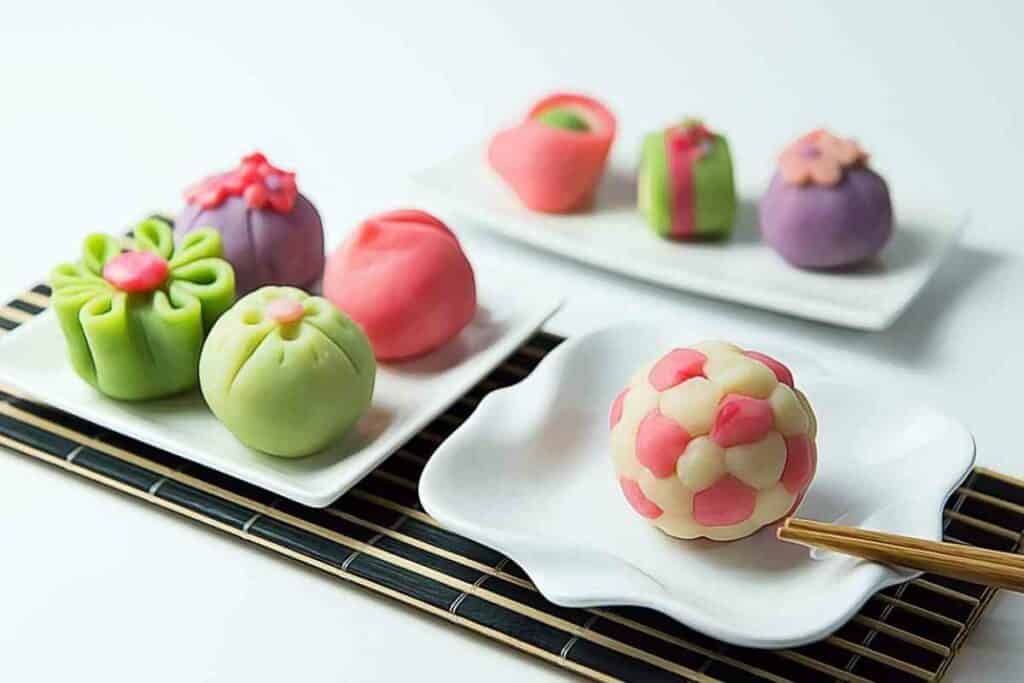
In this article, we look at Wagashi, Japan’s traditional sweets, including the most expensive confections that were only eaten by royalty.
Table of Contents
Wagashi, the traditional confectionary of Japan
Traditional sweets are a delicacy in Japan.
Known as wagashi (和菓子), these elaborate and often expensive confections are crafted by artisans using typically Japanese ingredients like:
- Mochi: sticky pounded rice that is then shaped
- Anko: a sweet red bean paste made from boiled, mashed, and ground adzuki beans.
- Fruit: like Japanese persimmon
- Agar
- Sesame paste
- Soybeans
- Sugar
- Nuts: including walnuts and chestnuts
- Natural food colorings: including safflower, pumpkin, and purple Okinawan sweet potatoes
A key characteristic of Japanese sweets is the all-natural ingredients they use, and their simple low-fat and protein-rich ingredients that rely heavily on beans and rice.
They do not use oils, fats, or spices and are delicately flavored.
A fine sweet for sophisticated Japanese hospitality
Japanese colloquially call any desert wagashi, but the most refined examples of Japanese sweets are the beautifully hand-shaped and molded sweets that are served as part of the tea ceremony.
These exquisite sweets are not like the dango, sakura mochi, or dorayaki that are enjoyed as snacks. Authentic fine wagashi are small and created to be enjoyed in two or three bites.
See later – 25 Must-Try Japanese Desserts
The history of Wagashi
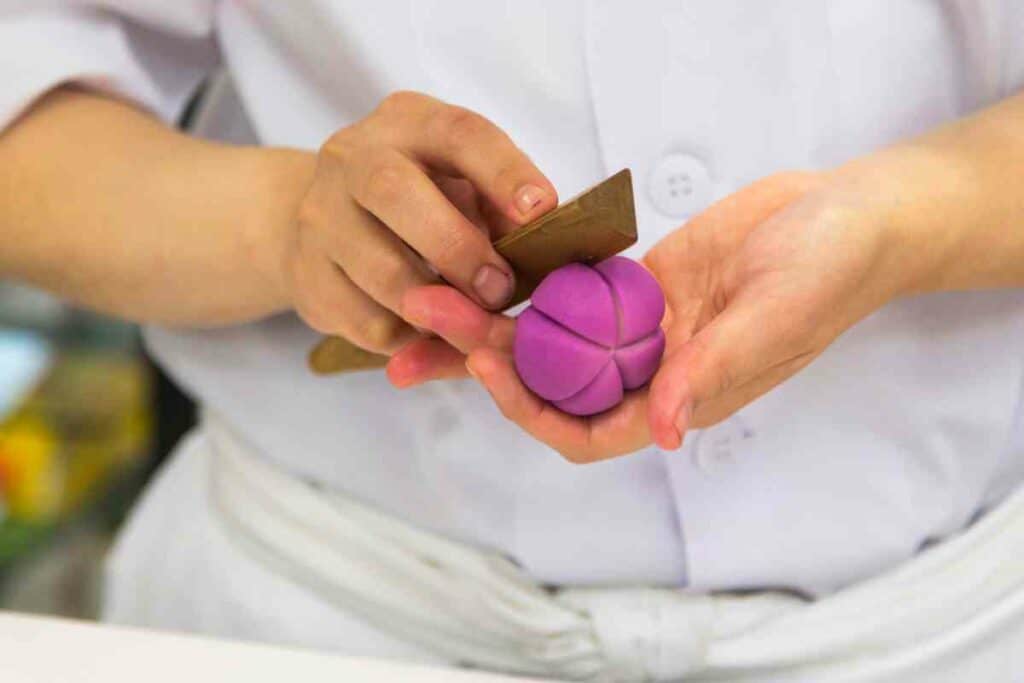
Wagashi are the finest sweets of Japan which have been enjoyed by royalty and the nobility for over two millennia.
Hundreds of years ago, sugar did not exist in Japan so sweet foods, or Kashi (菓子) were made from fruit or nuts.
The original Japanese ‘sweets’ trace their origin to the delicacies created by grinding nuts into a fine powder which was shaped into a delicious food similar to modern dango or mochi.
The introduction of Chinese sweets
The Japanese were introduced to sugar and the concept of ‘sweets’ through contact and trade with China’s Sui and Tang Dynasties.
In the Asuka period between 538 and 710, a variety of Chinese sweets were introduced to the Japanese including a deep-fried mochi-like sweet made from rice, wheat, and soybeans.
This delicacy, called Kara-kudamono, is thought to be the original Wagashi.
Refined craftsmanship
As the Japanese sweet tooth developed, sugar and the appreciation of sweetness increased towards the Muromachi period and well into the Edo period (1603-1868), when sweets were enjoyed as part of elaborate tea ceremonies.
During the Edo period, the artisans and confectioners who made Japan’s sweets developed more sophisticated production methods and refined ingredients.
Sweets that were truly Japanese
Wagashi also developed a distinctly Japanese character during the Sakoku or ‘Chained Country’ enforced isolation that spanned 1603 to 1868.
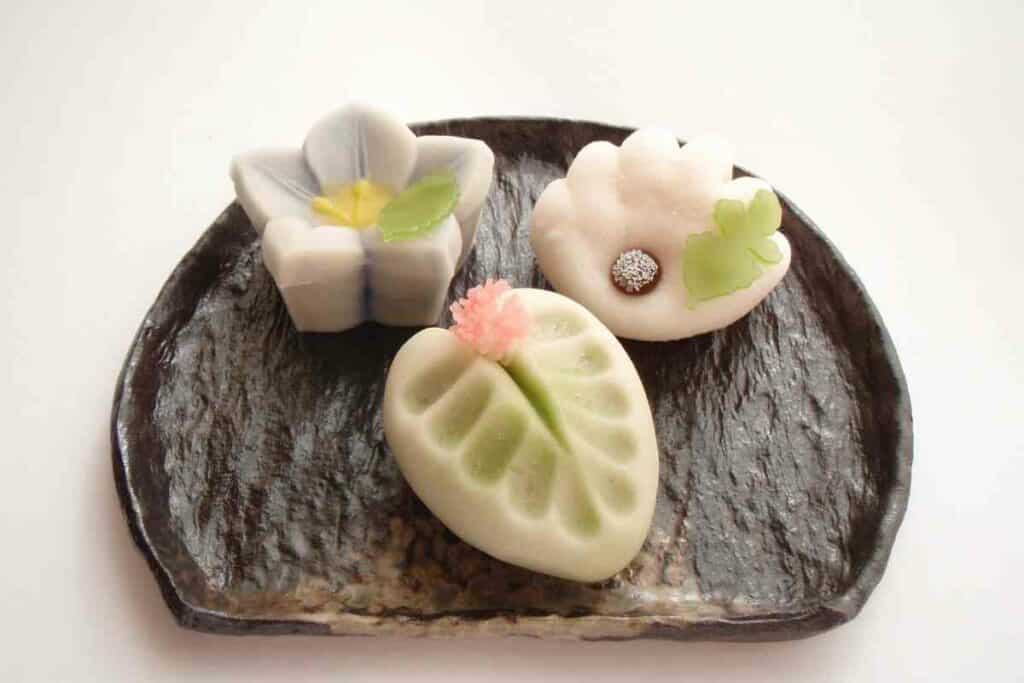
The refinements to Wagashi that took place during this period led to the premium Japanese sweets that are enjoyed today.
With the resumption of trade in the late 1860s, wagashi once again began to evolve with hundreds of varieties including baked versions developed with fine craftsmanship that has been passed down through many generations.
Kyogashi is Japan’s most exclusive wagashi
The most expensive and exclusive of the wagashi are the Kyoto-style or Kyogashi sweets.
These confections rose to prominence in the Edo era, particularly to serve the Imperial, aristocratic and priestly classes of Japan’s famed capital city and cultural heart.
Kyogashi represents the highest form of composition and craftsmanship in wagashi. They are incredibly artistic, with delicate designs that are inspired by nature and the changing seasons.
The Kyoto artisans and confectioners make them from secret recipes that have been handed down through more than 17 generations.
Like many of Japan’s traditional crafts confectioners study their art for decades before becoming honored masters, famed for their sweets.
Anything that does not make the grade is immediately discarded.
Kyogashi only uses the finest raw ingredients which are then sieved, mixed, strained, and kneaded to achieve the perfect consistency.
Three key types of Kyogashi to try
In Kyoto, there are three key varieties:
- Namagashi: soft, fresh, and moist sweets that are made with ingredients like fruit jelly or sweet bean paste. They often have natural designs like the chrysanthemum flower, fruits, or leaves. They are beautifully colored and shaped but must be eaten soon after preparation because of their 30% water content.
- Han-Namagashi: rich syrupy sweets with a consistency that can be gooey or brittle and dry. The name means ‘half-fresh’ and they should be refrigerated and eaten within a week.
- Higashi: dried sweets that have a long shelf-life. Higashi is diverse, ranging from hard candy to cracker-like dessert sweets. The best higashi is made from fine rice flour and a special sugar called wasanbon.
Enjoying fine wagashi in Kyoto
Eating fine kyogashi is a culinary experience that has to be tried at leading confectionery shops like Kameya Kiyonaga and Kanshun-do.
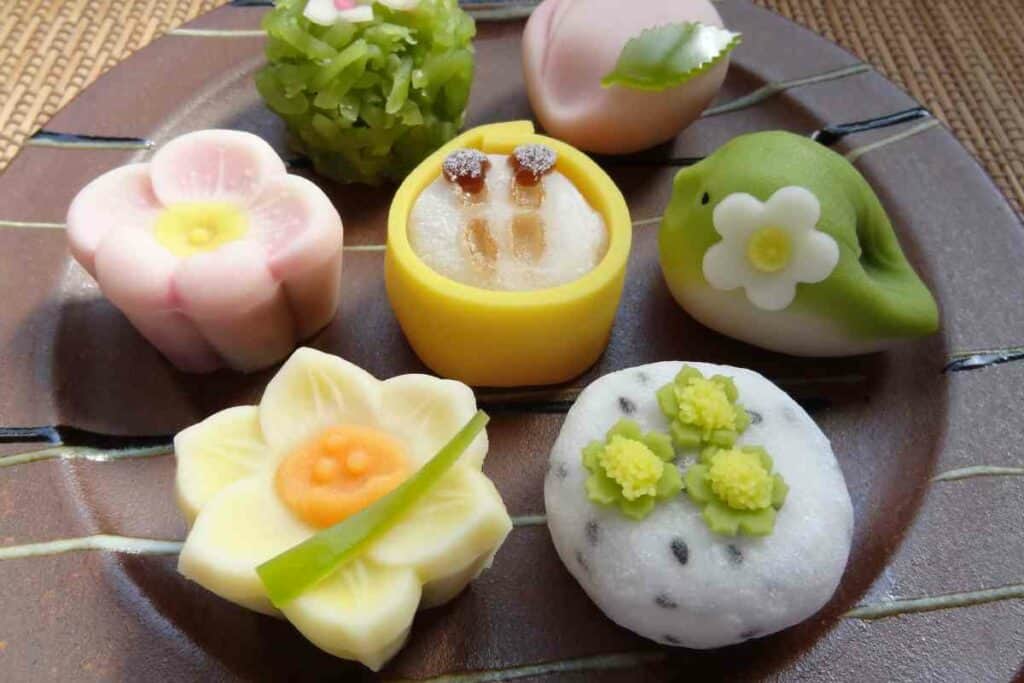
The sweets are served with a rich cup of matcha green tea.
You can eat the sweets any way you want, but take time to enjoy the flavors and aroma of your sweets. At Kashun-do, you can even try making these famed traditional sweets in the old traditional style in 75-minute classes run by the confectioners.
Wagashi aren’t just for tea ceremonies. These sweets are also enjoyed as a dessert, mid-morning or afternoon snack. They also make excellent gifts or souvenirs.
Where can I buy wagashi outside of Japan?
If you would like to taste the delicious flavor of Wagashi, some varieties are available online.
Here is an example of a delicious Japanese sweet that you can enjoy.
- A 225g pack of persimmon kuzumochi
- A delicately flavored fruit-based wagashi
- 3 sealed servings
- Served with a plastic knife
Rounding Up
Japanese sweets are a delicious low-fat treat, with nutritious all-natural ingredients.
They carry a unique heritage and are distinct from other sweets of the world. The very best wagashi, like kyogashi, are exquisite works of art, best enjoyed with refreshing matcha or green tea.
- Bubble Tea vs Boba Compared: What’s the Difference?
- Best Izakaya Foods for a Relaxed Night Out (My Top 10 Picks)
- Edo Kiriko Whiskey Glasses (Japanese Heritage in Every Pour)
- Japanese Viral Foods on Social Media (Discover the Top 10)
- Amezaiku: 10 Amazing Examples of Japanese Candy Art
- 25 Must-Try Japanese Desserts: Old and New

